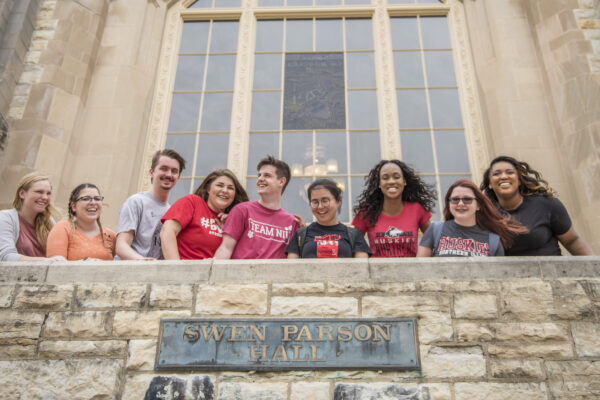By Lynn Tincher-Ladner and Dan Phelan
Recently, the Joint Statement on Transfer and Award of Credit was updated for the first time since 2017, part of the work of the ACE National Task Force on the Transfer and Award of Credit. The statement, revised by ACE, the American Association of Collegiate Registrars and Admissions Officers, and the Council for Higher Education Accreditation now better aligns with the significant changes occurring in the field, the impact the pandemic has had on accelerating these changes, and the increasing number of students relying on nonlinear higher education pathways. The learner-centered, evidence-based, and institution-led set of practices can help scale improved transfer outcomes for all learners, emphasizing the strength of the nation’s diverse higher education institutions and stakeholders to promote social mobility and opportunity.
We know that earning a bachelor’s degree is not as straightforward as it used to be. Out of necessity, students have become savvy consumers of higher education—mixing and matching credits from multiple institutions. Some start at a four-year college or university and others at a two-year community college. Many students enroll in summer, hybrid, or online classes. In many cases, students enroll in multiple institutions or multiple types of institutions concurrently, including dual enrollment in both high school and community college courses.
As the possibilities for completing a degree have opened up for more students, so has the need for more intentional transfer policies and practices among institutions at all levels. And college and university leaders have a role to play, including monitoring new developments, implementing what works best for their own campus community, and helping students explore their options.
Phi Theta Kappa (PTK), the honor society of community college students, has been leading the way on these practices for years. PTK provides community college students who intend to transfer with tools and scholarships designed to help them successfully transfer after graduation. Students who spend at least one semester at a community college and who earn at least a 3.5 GPA receive an invitation to join PTK. Access to scholarships—primarily, transfer scholarships—is the number one reason students accept. In 2020 alone, PTK’s 850 four-year scholarship partners awarded $240 million in these transfer scholarships. This aligns with what we know is the number one barrier community college students confront every day: a lack of financial resources. At any one point in time, there are about 250,000 active PTK members, and almost all of them—even the career and technical students—aspire to earn a bachelor’s degree.
While financing a four-year degree with as little debt as possible is among the top goals of a community college transfer student, other factors play into their decision. To help students negotiate the maze of transfer policies, PTK built a highly supportive, self-paced online course in 2019 called Transfer Edge to walk them through the nuts and bolts of financing, planning, and successfully transferring to a four-year college or university. Over 8,000 students have completed the course so far, and thousands more have completed at least one level of it. Students also have access to an online transfer institution and scholarship search tool, PTK Connect, which provides a single place for them to research prospective transfer institutions.
Beginning five years ago, Phi Theta Kappa introduced the Transfer Honor Roll to recognize four-year colleges and universities that are making a standout difference in the transfer experience—one that involves programs, services, and scholarships that lead to better outcomes for transfer students. The award has three purposes: 1) to inform students of the level of commitment a college or university has to their success, 2) to provide recognition for the efforts of four-year colleges and universities to build successful transfer pathways for two-year students, and 3) to provide feedback and benchmarks of transfer success to help four-year colleges and universities improve the transfer experience.
In its first year, fewer than 50 four-year colleges and universities participated in the Transfer Honor Roll. This year, over 700 have submitted their transfer profiles for consideration.
The Transfer Honor Roll is based on performance in over 40 metrics, including areas such as college cost and financial aid, recruitment and admissions practices, and campus life for transfers, and it brings together student success outcomes such as degree completion and credit transfer. The Transfer Honor Roll is selected from among the top quartile of colleges and is based on their “transfer-friendliness rating,” a composite score calculated from each metric and weight. At the core of the model are four highly weighted data points, including percent of vertical transfer in the undergraduate student population, bachelor’s completion rate of vertical transfers, credits applied toward a bachelor’s degree program, and need- and merit-based financial aid awarded to transfer students
Through the work of the Transfer Honor Roll, we have gained valuable insights into strategies colleges can implement that help students transfer seamlessly and successfully. We have learned that statewide articulation agreements are helpful, but not enough. Leaders at four-year colleges and universities must intentionally build their degree plans with community colleges in mind. This includes the use of course numbering systems that reflect 100- and 200-level courses typically taught by community colleges and coordination of learning outcomes across two- and four-year institutions.
The successful completion of a bachelor’s degree does not happen by chance. It requires intentional and coordinated efforts among transfer institutions to remove obstacles and create informed pathways that include institutional policies and practices—like the ones highlighted as a part of PTK’s Transfer Honor Roll. It also requires robust student supports, such as the ones available through PTK’s Transfer Edge. PTK exists to recognize student success, but also to provide students with opportunity to grow as scholars and leaders and to reach their educational goals, whether through transfer or by completion of a workforce-ready program. PTK members are more likely to complete an associate degree when compared with their peers who have the same GPA. And, once they transfer, PTK members are more likely to complete a bachelor’s degree than the students who began there as freshman—none of this is by accident.
We are now on version 2.0 of the Transfer Honor Roll and next year plan to introduce version 3.0—one that includes equity-based student success outcomes and outcomes by program of study. Presidents of two-year colleges can support successful transfer among students by establishing and supporting a PTK chapter on their campuses and by working closely with the colleges and universities in their areas that have a proven commitment to transfer success. Four-year college presidents can build on that work by implementing effective transfer policies and practices and by participating in PTK’s Transfer Honor Roll.
Phi Theta Kappa is recognized by the American Association of Community Colleges as the official honor society of community and technical colleges. Its mission is to recognize the academic achievement of students at associate degree-granting colleges and help them to their next steps in life. For more information about these programs or any of PTK’s programs, visit www.ptk.org or connect with Heather Yush at heather.yush@ptk.org.
If you have any questions or comments about this blog post, please contact us.


